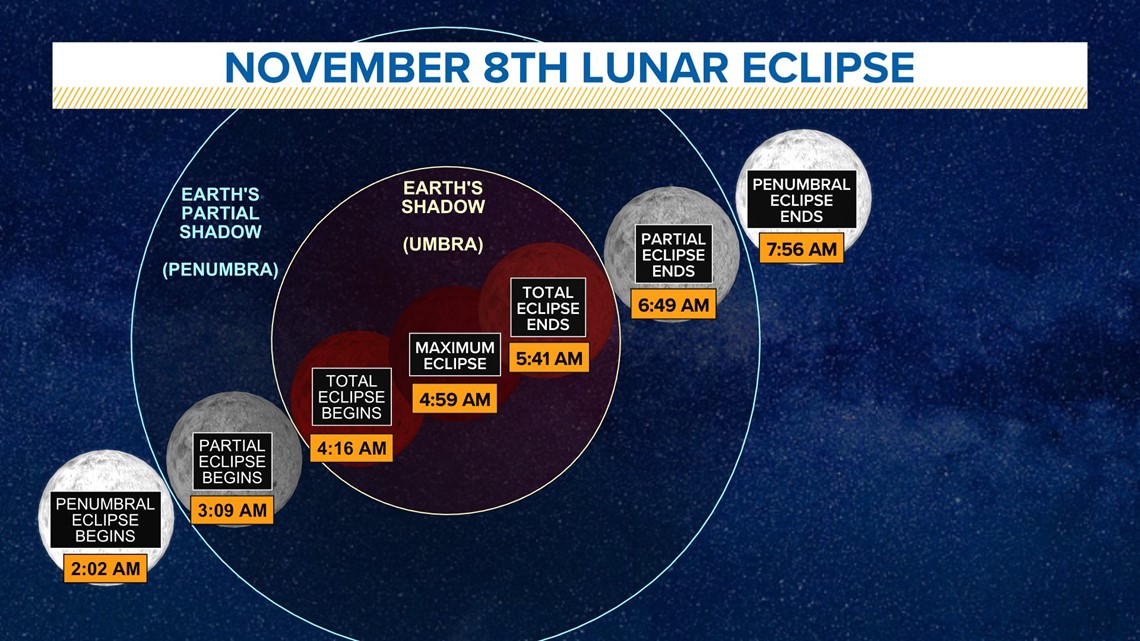DES MOINES, Iowa — Central Iowa stargazers, listen up: A total lunar eclipse will happen early in the morning on Nov. 8, the same day as Election Day in the United States.
The eclipse will be visible across Asia, Australia, the Pacific Ocean and the Americas, including right here in the Midwest.
Lunar eclipses happen when Earth moves between the sun and the moon, casting a shadow onto the moon.
When the lunar eclipse reaches totality, the moon typically appears bright red.
For the upcoming lunar eclipse, totality begins in central Iowa at 4:16 am CST and ends at 5:41am CST. The maximum eclipse will occur at 4:59 am CST.


The moon, sometimes referred to as a 'Beaver Moon' in November, will be low in the sky, so it's best to get away from surrounding trees and buildings that could obscure the view.
Also, it is safe to view lunar eclipses with the naked eye, but binoculars or telescopes certainly enhance the viewing experience.
Here's a fun fact: this total lunar eclipse is the first of its kind on Election Day in the United States.
According to EarthSky, the last lunar eclipse on Election Day was on Tuesday, November 3, 1846, but it was only a 'partial eclipse', likely not noticeable except for some savvy star (or moon) gazers.
There was a 'total eclipse' on Tuesday, November 4, 1873, but it happened in an odd-numbered year.
The next lunar eclipse on Election Day will be on Tuesday, November 3, 2218, but it will again be a 'partial eclipse'. A total eclipse will occur in 372 years on Tuesday, November 8, 2394.

